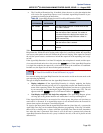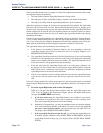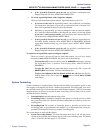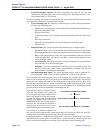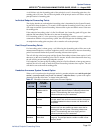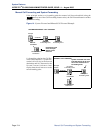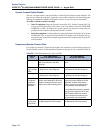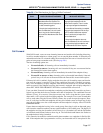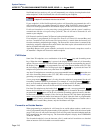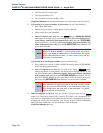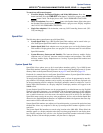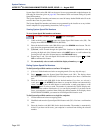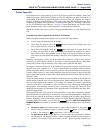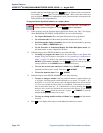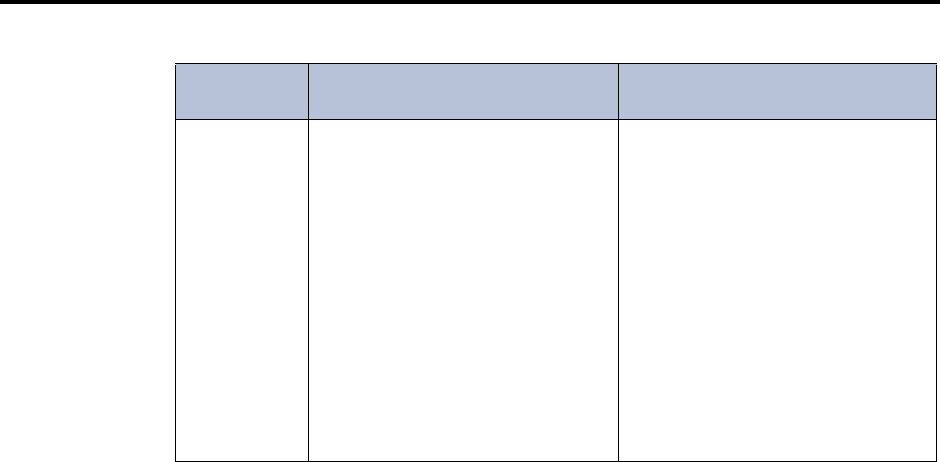
System Features
INTER-TEL
®
CS-5200/5400 ADMINISTRATOR GUIDE, ISSUE 1.1 – August 2005
Call Forward
Page 217
Call Forward
With Call Forward, a user can route incoming intercom and outside calls (including direct ring-
in calls) to another endpoint, to a hunt group, or to an outside phone number, if allowed by toll
and trunk restrictions. In a network setting, the network allows the user to forward calls to end-
points or hunt groups on another node. (See also page 240.)
The four forwarding options are:
• Forward all calls: All incoming calls are immediately forwarded.
• Forward if no answer: Incoming calls are forwarded if they are not answered before
the Forward No Answer timer expires.
• Forward if busy: Incoming calls are immediately forwarded if the endpoint is busy.
• Forward if no answer or busy: Incoming calls are forwarded immediately if the end-
point is busy or if calls are not answered before the Forward No Answer timer expires.
If forward all calls is enabled, display endpoints show the call forwarding status and destina-
tion until the request is canceled. If one of the conditional forwards is enabled (no answer,
busy, or no answer/busy), display endpoints show the forward status for five seconds and then
return to normal. If the endpoint receiving the forward is equipped with a display endpoint, it
shows EXT XXXX FWD FROM EXT XXXX for each forwarded call received.
Users can chain Forwards from endpoint to endpoint provided that the Forwards do not form a
logical loop and the chain does not include more than 10 endpoints. The conditional Forward
features (if busy, if no answer, if busy/no answer) may form a loop that the system cannot
detect until a call is placed to the forwarding endpoint. For example, if two users forward their
calls to each other using the Forward If Busy feature, the system accepts the requests. How-
ever, if a call rings in while both endpoints are busy, the forwards create an illegal loop. In this
case, the call camps on to the called endpoint and that endpoint’s display shows INVALID
FORWARD PATH.
If more than one endpoint has ring in for a trunk group, direct ring-in calls on that trunk group
will forward to extension numbers, but not outside numbers or Voice Mail ports. The display of
the endpoint receiving the forwarded call will show it as a forwarded call, and the Call button
or individual trunk button flashes to show ring in. The individual trunk button also flashes on
the endpoint that is being forwarded.
Calls cannot be forwarded to restricted outside phone numbers or to endpoints in Do-Not-Dis-
turb. If the endpoint that is programmed to receive your forwarded calls is later placed in Do-
Recalls Recalls the principal endpoint's
Attendant when the System For-
warding Advance timer expires at
the last forwarding point.
If the principal endpoint does not
have an Attendant, the call contin-
ues to ring at the last forwarding
point until the Abandoned Call timer
expires.
If immediate forwarding is enabled,
rings principal endpoint until the
Recall timer expires. Then it recalls
the principal endpoint's Attendant.
If a conditional forwarding is enabled,
rings principal endpoint until the Sys-
tem Forward Initiate timer expires.
Then it recalls the principal end-
point's Attendant.
If the principal endpoint does not
have an Attendant, the call continues
to ring at the principal endpoint until
the Abandoned Call timer expires.
Table 28. Final Destinations for Types of Calls(Continued)
TYPE OF
CALL
ALL FWD POINTS
BUSY OR DO-NOT-ANSWER
ALL FWD POINTS
IN DO-NOT-DISTURB



